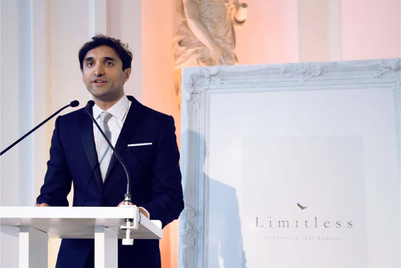Adidas and Parley’s global Run for The Oceans movement came to India for the first time and both brands wanted to make sure that they weren’t simply “talking the talk”.
For every kilometre that participants’ run, Adidas donated a dollar to Parley, the firm using tech to turn ocean plastic into thread. To go the extra mile, Mumbai-based event agency 70 EMG was tasked to make the event, held at Versova Beach, 100% plastic-free, a task that proved challenging.
One forgets how much plastic goes into a sporting event like a run. And as this was a first-of-its-kind in Mumbai, the agency had trouble looking for new vendors to work with.
“It required reaching out to new vendors who were printing on fabric, but they don’t necessarily cater for events. So there was a lot of conversation and trial with them,” said Daniel Rose, project manager at the agency. He added that fabric printing was also a challenge for the branding of the event.
What seem to be inevitable at events are plastic bottles. “There were going to be 3,000 people coming to the event plus crew, plus people actually working overnight. How do we provide a simple element like water?” said Mitalee Chandwani, associate director – creative solutions, at 70 EMG.
Instead, the team created water stations that held water in steel and claypots. There were also mobile water dispensers and staff who walk around the grounds to get water to runners. Cups were made of bagasse, a material derived from sugarcane that goes back into the oceans for marine life to feed on.
For dustbins, the metal kind were used. “Panel metal dustbins tend to be an eyesore and we had to keep the event visually beautiful. So we put cloth around them,” said Rose. To replace plastic medals, the team commissioned out wooden ones. And as participants were given race T-shirts, even the small strips of plastic used in the tags had to be removed.
“Plastic is so commonly used in events on a day-to-day basis. So to find alternatives and remain cost-effective was quite challenging,” said Rose. “Other times, when you resort to using steel and wood over plastic sometimes, it could work out to be just as cost-effective but it wouldn’t look as good.”
Another major element of the event was the beach clean-up where participants helped to pick up trash after the run. Between 3,000 runners, the waste collected on the day amounted to 126 tonnes.
“It was a project where people could literally see the mess they were making [to the environment]. In terms of long-term sustainability, it was less about the number of people we could get on the particular weekend, but more about how many came back the following weekend or the weekend after that to maintain the clean-up,” said Rose.
“We had runners as young as eight. And we saw a woman who came in with a walking stick. It was great to see how we attracted different mindsets.”
On whether clients are requesting more plastic-free events, both Rose and Chandwani said that more brands have been curious about the concept after the run. While some clients may balk at price quotations and revert back to their old ways, Rose said “at the end of the day, it is a business decision”.
“The conversation of a cleaner country has been going on, and people have been trying to pick up on that. But we’re actually very far from converting our mindsets,” said Chandwani. “As a country there are different stratas, so to get there, we’re going to need some time.”


























.jpg&h=268&w=401&q=100&v=20250320&c=1)

.jpg&h=268&w=401&q=100&v=20250320&c=1)
.png&h=268&w=401&q=100&v=20250320&c=1)



.jpg&h=268&w=401&q=100&v=20250320&c=1)